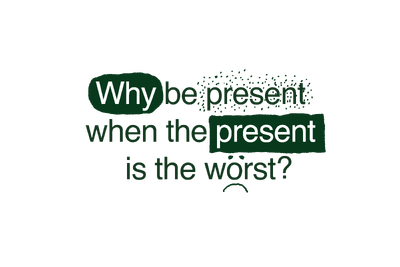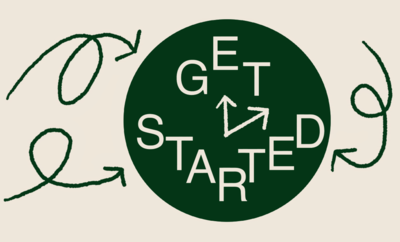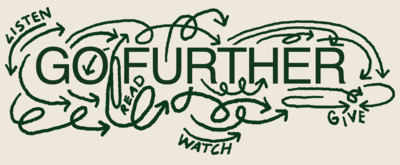If you tried to take stock of all the places you’ve been sold “mindfulness,” you might just lose your mind. “Brew coffee and stay in the moment!” “Start a skincare routine to be in your body.” “Decorate your way to peace.” The business of being present has been turned into a flashy sales pitch, but that’s a shame because there’s actually serious substance to it.
Jon Kabat-Zinn, a professor who created the Stress Reduction Clinic and the Center for Mindfulness in Medicine, Health Care, and Society at the University of Massachusetts Medical School, describes mindfulness as “the awareness that arises from paying attention, on purpose, in the present moment and non-judgmentally.” So close your tabs, mute your phone, and read on.

Isn’t it a little much to be present for all the troubling stuff happening in the world right now? Quite the opposite: Presence is about noticing where you are physically, not venturing into anything beyond your immediate sensorial experience. Are you warm? Cold? Are your feet on the floor? These are the truths of your present state; focusing on them is what keeps your brain from jumping three steps ahead to whether you have the ingredients for dinner. (Or should you make something else instead? What about takeout? No, you really should cook…)
And if this exercise seems daunting, don’t be discouraged: Imperfection means you’re doing it right. You don’t juggle for the first time and expect to be an expert, do you? Presence works the same way in the brain, says Dr. Sara Lazar, associate researcher in psychiatry at Massachusetts General Hospital and assistant professor in psychology at Harvard Medical School. “If you work certain connections frequently, they will grow.”

Of course, the concept of presence didn’t originate in an ad for CBD seltzer. It actually dates back 4000+ years to the Hindu traditions formed in the Indus Valley between 2300 BC and 1500 BC. The first inklings of it come from the yogic practice of dhyāna, which prescribed settling the mind enough to watch your thoughts pass by without getting wrapped up in them. That peace comes from being present in your body (hence the yoga). Over time, these ideas would travel, and around the 6th century BC, they became central to the formation of Buddhism. Our contemporary concept of mindfulness is closest to the Buddhist practice of Sati, “moment-to-moment awareness of present events.”

“The brain is a lot like a muscle,” says Dr. Lazar. “The parts of the brain that get worked out when you meditate are growing.” Credit neuroplasticity, the scientific concept that our brains continue to change based on what they’re exposed to.
Meditation is perhaps the most recognizable presence practice, and while there are lots of kinds—from mindfulness meditation to transcendental meditation—each practice cultivates a feeling of being physically present in your body. This can strengthen the area of the brain involved in deciding what you pay attention to or ignore, Dr. Lazar says. It also builds up the brain regions responsible for learning, memory, and decision-making.
Studies show that a mindfulness practice also helps the brain recover from stress more quickly, which in turn can have a ripple effect on virtually every other aspect of your life:
- You might feel less biased and more compassionate (that oneness helps you identify with others).
- Your relationships could improve (conflict is less of a problem when you’re able to metabolize stress better).
- It may calm chronic anxiety since it helps you recognize your thoughts as just thoughts—not threats. In response to meditation, the amygdala (a primitive part of the brain) “gets smaller and less active in sending fear signals,” explains Dr. Lazar.
As a favor to future-you, practicing presence could even hold off mental aging. Dr. Robert Keith Wallace, a researcher at Maharishi University, has found meditation lengthens telomeres, helping your cells to replicate better, and in effect stay fresher. That’s some pretty big payoff in exchange for sitting still.

Being present is also good for your love life. A famous study of marriages conducted by psychologists Drs. John and Julie Gottman revealed that a key difference between successful and struggling relationships was the rate at which one partner answered the other’s “bid” for attention. Those couples that were more present for each other—rather than distractedly responding while skimming a magazine—were more likely to still be married when the researchers followed up six years after the study.

Even knowing the benefits, the practice of “doing nothing” can fall into endless purgatory on your to-do list. Here are simple ways to incorporate mindfulness into your day.
If you have 1 minute
Try the raisin exercise. Pick up a single raisin (or nut or berry). Notice how it looks and feels in your hand. Smell it. Feel its texture in your mouth and sense how it feels when you swallow. You’re acquainted with the concept of “raisin”—but how well have you gotten to know this little guy?
If you have 15 minutes
Do a quick body scan, focusing on how each area feels. Start with your toes, then feet; move on to your ankles, calves, knees, thighs, pelvic region, lower back, and abdomen. Then up through your chest, upper back, arms, hands, neck, and head. (As an alternative, here’s a longer guided body scan by the founder of mindfulness-based stress reduction, Jon Kabat-Zinn.)
If you have 30 minutes
Take a break to color (no, seriously). Coloring is believed to boost mindfulness and reduce anxiety. If you haven’t owned a coloring book since third grade, don’t worry, we came prepared. Simply download this original Prism drawing, print it out, and get to work. Inadvertently create a masterpiece? We want to see. Share your work on Instagram and tag us @readprism.

WATCH
Take 15 minutes for Richard J. Davidson’s TEDx talk on How mindfulness changes the emotional life of our brains.
LISTEN
Subscribe to renowned meditation teacher Tara Brach’s podcast, which offers a mix of guided meditations and calming talks on
DO
Download the Insight Timer app, which has a free tier and thousands of meditations of all different lengths.
GIVE
As you’re gathering, the more of us who practice mindfulness, the better. If you have some dollars to spare, consider donating to Yoga4Change, which provides yoga lessons and mindfulness training for the incarcerated.

Wellness stories you won’t find anywhere else.

